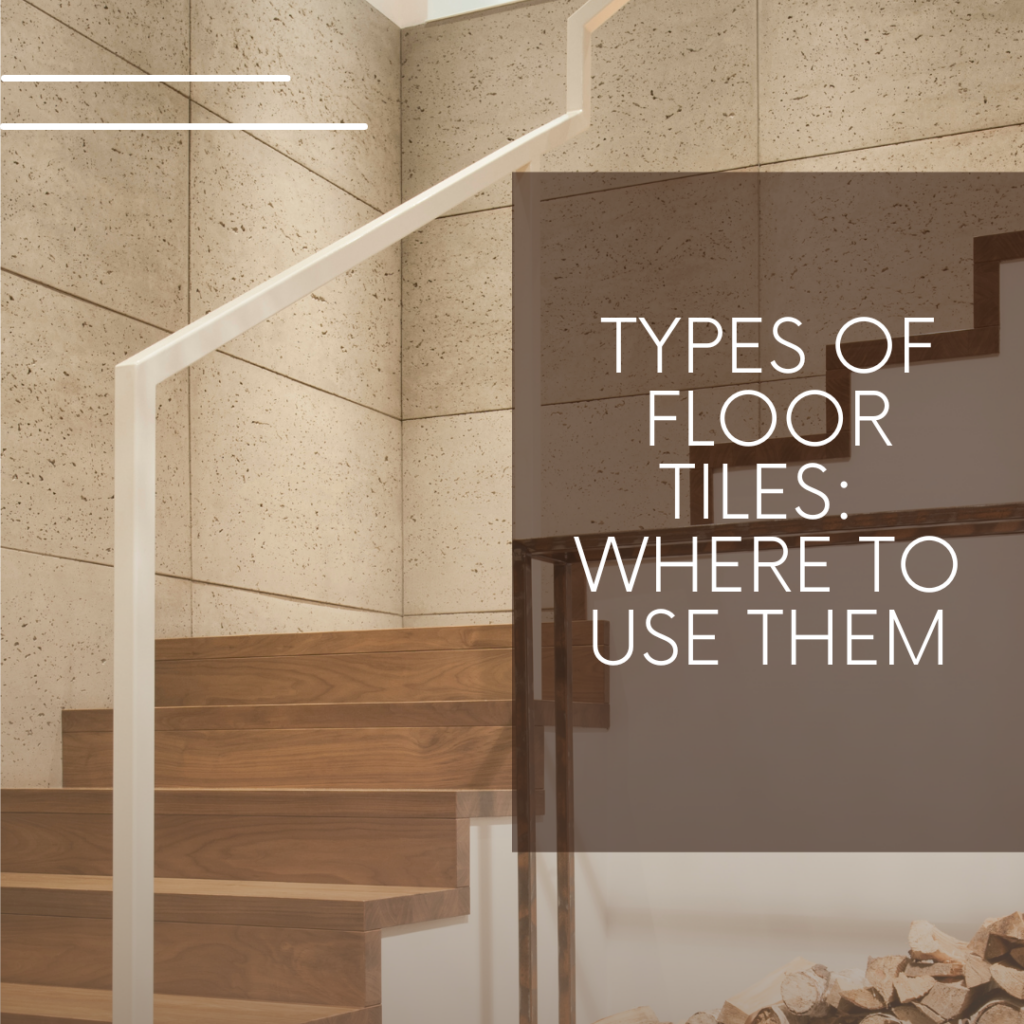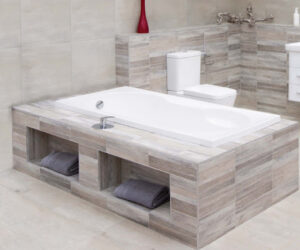Floor Tiles: Where To Use Them

There are several hues, textures, thicknesses, sizes, and materials available for tile. One of the most versatile design elements is tile, which comes in a variety of colours and textures, from crisp, dazzling white to linen-textured blue or green, geometric and modern to traditional and rustic. In addition to being used as kitchen tabletops, tiles are frequently used as flooring in bathrooms, parking lots, rooftops, and kitchens. Tiles can be made out of porcelain, ceramic, glass, stone, metal, and other materials. Tiles come in a variety of sizes, so we may use them for any type of design. Additionally, because of its hard surface, which deflects heat and radiates pleasantly chilly temperatures in the summer, tile serves as a natural room air conditioner. The coolness of a high-quality tile floor will make every shower feel more pleasant on a hot, muggy day.
Also Read: –An Inside Look At The Houses Owned By Nina Dobrev
Types and uses of Tiles
-
Ceramic Tile
One of the most popular types of clay-based tiles is ceramic tile. They are taken out, refined, and formed for use. Their ability to blend in with almost any room design. The most essential features of ceramic tiles are their prolonged lifespan, range of applications, and high resistance to scuffing and breakage. They are sturdy enough to withstand years of nonstop foot traffic. They also provide a huge selection of design alternatives. Floors, backsplashes, countertops, worktops, and bathrooms typically feature ceramic tiles.
-
Quartzite Tile
For flooring purposes, quartzite is a form of rock that offers a beautiful, natural appearance.
For flooring purposes, quartzite is a form of rock that offers a beautiful, natural appearance. It is a popular option for home flooring tile installations, particularly in the kitchen, because of its exceptional durability, beauty, and wear resistance.
-
Onyx Tile
Because onyx is a clear, calciferous stone, onyx tiles mimic marble tiles. Onyx stone is perfect for use in the living space because of its high mineral density, which produces a characteristic clear appearance. However, the stone lacks the stiffness required for a tile because of its fragility. Different surface kinds of onyx tiles each have characteristics that limit their use. They are frequently used indoors and for flooring applications with light usage and come in a variety of colours. The colours must be combined together to produce a stunning colour diversity, though.
-
Porcelain Tile
A higher-quality clay ceramic tile is porcelain. Because they are created with a larger percentage of silica and quartz and fired at a high temperature, porcelain tiles are more durable and costlier than their red clay ceramic competitors. When it comes to colour and pattern, porcelain tile is a chameleon. Porcelain tiles can resemble expensive marble, expensive hardwood planks, or commercial bricks when they are polished, etched, and texturized.
-
Terrazzo Tile
Granite, marbles, glass, and quartz are the most popular materials used to make terrazzo tiles. The finished surface is durable, appealing, bright, and smooth, making it ideal for public buildings. It is not, however, the most important type of tile material for home installation due to its slippery nature. Polishing and curing are both steps in the preparation process. Due to its anti-slip characteristics, using it in restrooms is highly advised.
-
Marble Tile
Marble, which is occasionally regarded as one of the most expensive natural stone tile materials, is an alluring and striking option that exudes elegance and flair that is challenging to replicate with other materials. Intense heat and pressure are used to make marble, which is richly veined with rich mineral lines. Marble can withstand the heat and stress of daily living pretty well. Marble tile may be the only type of tile that may drastically improve a space. Natural stone comes in a variety of colours naturally, including green, grey, beige, white, and black. It also presents amazing colour veining and offers a tonne of depth and contrast. Because marble is a porous material, look for any rough spots when purchasing marble tiles or slabs that may need additional sealing to prevent stains. Because it is slippery, this can be used anyplace in the house other than the bathroom.










